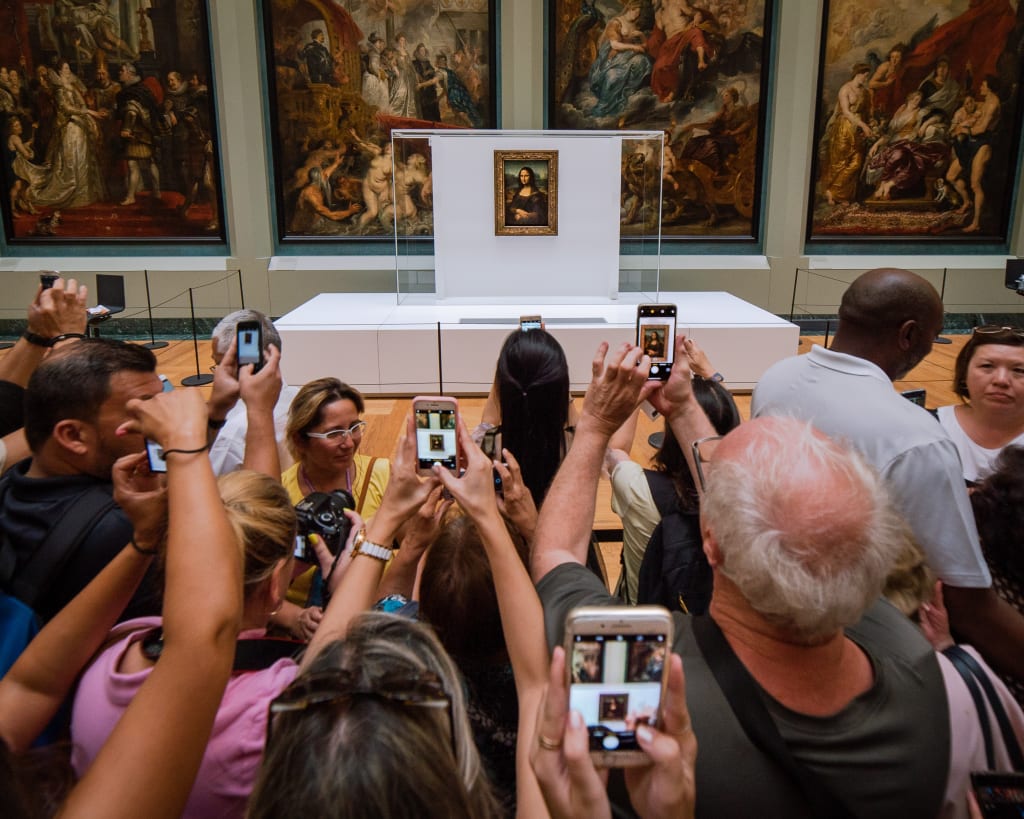
As a Leonardo da Vinci enthusiast, artist and ferocious reader, I have collected books and read countless biographies on him, visited museums with his collections, studied his works online, and emulated many of his artworks in various media. And after all this time, I cannot shake off the feeling that this extraordinary Renaissance man, who was prolific in so many fields might have Multiple Personality Disorder.
Now, you may be curious as exactly what prompted my suspicion. It is because, like the man himself, I have suspected the exact same thing about myself. Although I cannot be dead certain on either case, nor can I tell you whether this mental disorder is as real as some psychiatrists presented it to be; my intuition tells me that both our behaviour patterns fit the description of such a mentality or have some sort of resemblance at least. Yes, if you have read about this extraordinary man yourself, you would have encountered a description of him that is of significance. He had a habit of abandoning his works and leaving them unfinished. We will come back to this later to the reason for its significance.
But before we go into the analysis too deep, let’s briefly have a look at what Multiple Personality Disorder (MPD) entails. As you may have already known, this bizarre disorder is especially controversial and has generated many interesting tales in the media. Many books and films have been associated with it and the general public seem to have a lasting fascination about this mythical beast. Many still doubt whether this condition even exists or it is simply a fictitious construct made up by some doggy psychiatrists to extort money from the easily influenced Frankenstein puppets they created. Regardless of the speculations and doubts, from a medical perspective, it is currently acknowledged as a real psychological disorder.
The name of this condition as evolved during the years. Although many still call it Split Personality Disorder, the proper name for this disorder is Dissociative Identity Disorder (DID) in Diagnostic and Statistical Manual of Mental Disorders published by the American Psychiatric Association. It is characterized by a person experiencing at least two distinct personality states accompanied by memory gaps. The cause is agreed to have largely to do with childhood trauma. This is one of the most complicated diagnosis in the manual mainly because there are still disagreements on what the symptoms consist of and how it should be diagnosed. This condition has been frequently quoted by many offenders in their insanity plea deals, though mostly unsuccessfully.
I do not want to drag this piece of writing too technical or tedious for the readers, therefore, if you wish to have a deeper understanding, you can read more about this condition on Wikipedia, DSM-5 or other easily accessible online sources such as psychology and psychiatry magazines and journals. Ok, I hope you read large and wide or at least had the chance of briefly looking over the diagnostic criteria online. Now, let’s talk about Leo.
Leo, as many already know, was famous for abandoning his works and left them unfinished throughout his life. It was a well-documented fact and well known among his peers. As a matter of fact, this undesirable trait had become detrimental in many employment opportunities. Many of his clients became disgruntled due to his irresponsible behaviour, therefore, Leo did not have very good reference letters when he was bidding for some major projects that involved large sums of money, including the lucrative projects with the Medici family and the church, and the public projects that elevated many artists fame and social status. It was a shame to think such a genius could be so disorganized at the same time.
But on the contrary, he was not disorganized or forgetful as a person at all. He kept a leather-bound journal with him at all times and meticulously documented details on all his dealings, especially on his accounting. It was evident in his many codices that survived into this day, in them, apart from the famous sketches and illustrations, lingered diaries, cooking recipes and receipts of his purchases. So, if it was not low intelligence and disorganization, what caused the behaviour of abandoning his projects for no obvious reason? The answer may indeed lie in his psyche which he himself might not have been able to explain.
Personally, I came to the realization that he abandoned the projects because his personality state changed, simply as that. The clue to this insight lies in my reflection in my own behaviour. Like Leo, I too, left many projects as they were and simply move on to other entirely unrelated fields. These moments of change was unplanned. One morning, I would wake up and have the urge to study science with the same burning desire to create art. It is an emotion so strong that it engulfs me and I would hardly have any desire to go back to the previous engagement. It is a total loss of interest as if the person I was yesterday had nothing to do with the person I am today. When I’m in a new state, I would look at all the stuff in my workspace in pain. As if yesterday’s me died and left me with all the junk that I have to process. But I cannot simply get rid of them because that person could resurrect at any moment and she would need them once again when she does. So I often have to either rearrange all that stuff on my desk, the books and tools pile high in my room, or simply move to another spot and quickly dive into the project I love with enthusiasm.
I have lived with this state of being my whole life. It is not as glamorous as they portrayed on the silver screen, it does not give you superhuman abilities. Quite the opposite, the personality sate switch makes you feel disoriented and confused. On top of that, you would end up with a bad reputation for lack of discipline, being a scatterbrain or downright irresponsible and immoral. But that’s me, for someone like Leo, it’s called the Renaissance man or woman, a trait with a positive flair. Well, he was lucky in the sense that he was born in the Renaissance era and they had a thing for artists who were proficient in multiple disciplines.
So, what caused this behaviour? Did Leo experience trauma in his childhood? Inevitably yes, I would say. He was the son of a notary Piero of a well off family. Trouble was, his mother was not well-documented farm labour, either a peasant or a slave, and he was born illegitimate. His mother was quickly married off to another labour of similar status and he had many siblings on both sides. The unique situation created all sorts of problems and disadvantages for young Leo. Despite being his father’s first son, he was not university educated and could not read and write in Latin as most of his peers did; instead, he was sent to an artist Verrocchio as a live-in apprentice in his workshop. Leo wrote in Italian in his journals with his famous mirror technique instead.
Leo’s contempt towards his status was evident in the lacking of the description of his mother. He was famous for portraits and yet had not done a portrait of either parent even once. Apart from brief notes of his mother moving down to live with him after her husband died and the pitiful cost of her funeral after her death, she remained largely elusive. Leo sounded like he tried to avoid talking about where he came from at all costs so the childhood trauma of his neglect by his parents was an obvious and logical conclusion.
Did he suffer from depression? More than likely I’d say. Although he didn’t do portraits of his parents, he seemed to have done one or more than one of himself, no matter authenticated by experts or not. From those portraits, he certainly did not look like a jaunty fellow. He looked, serious, if not wistful. At least that’s how they come across to me personally. And back in the day when the Medici family ruled and family lineage meant serious business, who could blame Leo’s indulgence in woes and self-pity? Otherwise, Leo was a healthy man, by all means, he was not a drug addict and did not have other psychological disturbances.
So, in conclusion, I personally think Leo does have Dissociative Personality Disorder. Again, my opinions are entirely my own and have no diagnostic effect at all.
Note: Personality state switches, as far as my personal experience, are not complete splits. Most people with this condition still remember their family and friends, their address, workplace, colleagues, phone number, commute route and so on. I personally experience cognitive dissonance after the switch but not complete loss of memory. Although some of the individuals with more distinct memory loss that are less cohesive take on different personalities with different names and habits, some of the personalities are still able to communicate with the others which indicates an incomplete split too.
About the Creator
Rex
Everybody knows Rex!






Comments
There are no comments for this story
Be the first to respond and start the conversation.